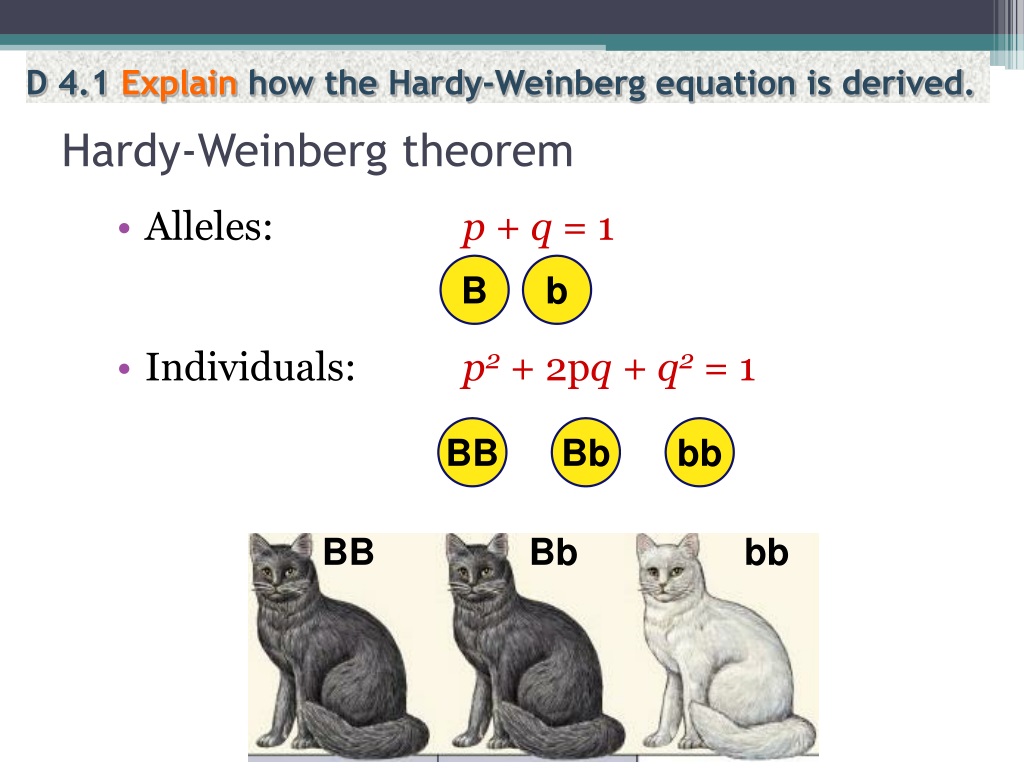

These are the values that are predicted by the law.

In the above table the genotypic frequencies for AA is p^2, the genotypic frequency for Aa is 2 pqĪnd the genotypic frequency for aa will be q^2. One of the predictions of the Hardy-Weinberg Law refers to the genotypic frequencies after one generation of random mating. If p equals the frequency of allele A and q is the frequency of allele a, union of gametes would occur as follows: The two conclusion of the Hardy-Weinberg Law can be mathematically demonstrated in the following table. For these loci this assumption will be violated, whereas at those loci not affected by these forces this assumption will not be violated. As with random mating, some loci may be more affected by these forces. No evolutionary forces affecting the population - These forces may or may not be at work on a population, and we will discuss them in more detail later. But this does not preclude the analysis of the population for those traits at which random mating is occurring. For these traits the population is not random mating. But for other traits, such as intelligence or physical stature, this is the case. Individuals do not consciously select a mate according to blood type. In humans, at least, for many traits such as blood type, random mating will occur. If significant deviations occurred in the other matings (for example MM x MN or MN x NN), again the assumption of random mating will have been violated. If a significant deviation from this expected value occurred, then random mating did not happen in this population. For example, if the genotypic frequencies in a population are MM=0.83, MN=0.16 and NN=0.01 then we would expect that 68.9% (0.83 x 0.83 X 100) of the matings would occur between MM individuals. Random mating - Random mating refers to matings in a population that occur in proportion to their genotypic frequencies. This is a problem in small population, but is minimal in moderate sized or larger populations. Genetic drift is a change in gene frequency that is the result of chance deviation from expected genotypic frequencies. Infinitely large population - No such population actually exists, but does this necessarily negate the Hardy-Weinberg Law? NO!! The effect that is of concern is genetic drift. Let's examine the assumptions and conclusions in more detail starting first with the assumptions. then the gene frequencies will not change over time and the frequencies in the next generation will be p 2 for the AA genotype, 2 pq for the Aa genotype and q 2 for the aa genotype.mutation, migration and natural selection),
Hardy weinberg principle free#
If an infinitely large, random mating population is free from outside evolutionaryforces (i.e.The law predicts how gene frequencies will be transmitted from generation to generation given a specific set of assumptions. The unifying concept of population genetics is the Hardy-Weinberg Law (named after the two scientists who simultaneously discovered the law). Population and Evolutiionary Genetics WWW Links Population and Evolutiionary Genetics Overheads Deriving Genotypic and Allelic Frequencies


 0 kommentar(er)
0 kommentar(er)
